
 |
NEW OIL TECHNOLOGY COULD SIGNAL SALVATION FOR AMERICA'S ENERGY CRISIS by Kaya Morgan
 While the nation is preoccupied with hostile threats from abroad and upcoming political rallies, it's easy to forget that other less-publicized issues threaten to undermine the very well-being of our country. As one might reasonably assume, the Department of Energy laboratories are working furiously on a wide range of energy-related technologies all bent on finding an answer to the age-old question of solving our continued dependence on fossil fuels. Meanwhile, dramatic changes are unfolding due to a new oil recovery technology that promises to be the answer.
While the nation is preoccupied with hostile threats from abroad and upcoming political rallies, it's easy to forget that other less-publicized issues threaten to undermine the very well-being of our country. As one might reasonably assume, the Department of Energy laboratories are working furiously on a wide range of energy-related technologies all bent on finding an answer to the age-old question of solving our continued dependence on fossil fuels. Meanwhile, dramatic changes are unfolding due to a new oil recovery technology that promises to be the answer.
 As the most actively-traded commodity, no other resource has had the enormous impact on our lifestyle as the use of oil in its various refined forms. With its ease of transportation and storage, relative safety, and versatility in end use, it has become the basis for the manufacture of medicines, paint products, plastics, rubber, clothing, and a myriad of other products. Yet, if recent predictions made by the U.S. Energy Department are accurate, crude oil prices could reach upwards of $51 a barrel by 2025 due partly to the spiraling rise in world energy requirements, coupled with continuing strong economic growth and development in Asia.
As the most actively-traded commodity, no other resource has had the enormous impact on our lifestyle as the use of oil in its various refined forms. With its ease of transportation and storage, relative safety, and versatility in end use, it has become the basis for the manufacture of medicines, paint products, plastics, rubber, clothing, and a myriad of other products. Yet, if recent predictions made by the U.S. Energy Department are accurate, crude oil prices could reach upwards of $51 a barrel by 2025 due partly to the spiraling rise in world energy requirements, coupled with continuing strong economic growth and development in Asia.
 Although we may not be running out of oil just yet, eventually the cost to recover what oil still remains by using today's conventional technology will be beyond the value of the oil itself — effectively a net energy loss situation. The only long-term solution would be to reduce our dependence on cheap foreign oil. Previously, that just hasn't been feasible due to the higher costs associated with alternative sources for oil. Consequently, we continue to spend billions of dollars on imported oil, while an untapped resource of domestic supply has remained dormant — until now.
Although we may not be running out of oil just yet, eventually the cost to recover what oil still remains by using today's conventional technology will be beyond the value of the oil itself — effectively a net energy loss situation. The only long-term solution would be to reduce our dependence on cheap foreign oil. Previously, that just hasn't been feasible due to the higher costs associated with alternative sources for oil. Consequently, we continue to spend billions of dollars on imported oil, while an untapped resource of domestic supply has remained dormant — until now.
Thus far, not the government, the industry, nor the financial sector has been able to come up with any viable solution. With no one left to turn to but the private sector, enter Jack Savage's Utah-based company, Oil-Tech. Through their long-term efforts, and undying belief in a solution for new oil-recovery technology, Oil-Tech has proven that they can produce oil at a cost of approximately $10 a barrel.
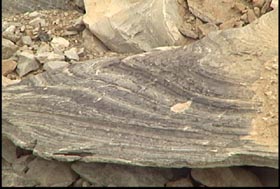 How could that be, is the billion dollar question. The answer lies in shale. Of course, recovering oil from shale is not a new concept. The Federal government, working with many of the major oil companies, has known of the potential for oil recovery from oil shale for the last 100 years or so. Historically, the traumatic Gulf oil crises of the 1970s sent oil prices skyrocketing, and gave rise to the hopes in the oil industry that shale would develop into a booming synthetic-fuel industry. To encourage domestic production, Congress enacted the synfuels tax credit, initially creating the Synthetic Fuels Corporation.
How could that be, is the billion dollar question. The answer lies in shale. Of course, recovering oil from shale is not a new concept. The Federal government, working with many of the major oil companies, has known of the potential for oil recovery from oil shale for the last 100 years or so. Historically, the traumatic Gulf oil crises of the 1970s sent oil prices skyrocketing, and gave rise to the hopes in the oil industry that shale would develop into a booming synthetic-fuel industry. To encourage domestic production, Congress enacted the synfuels tax credit, initially creating the Synthetic Fuels Corporation.
 Oil companies quickly began to flock to the shale-rich basins of eastern Utah, western Colorado and Wyoming, redoubling their efforts to bring manufacturing facilities online. Yet, over the years, one by one, all the oil-shale projects of the 1980s were eventually scrapped. The decline in crude-oil prices was only partly to blame. The largest single factor was the government's reversal of policy. Originally bullish on shale, coal and other synfuels in the 1980s, Washington soon decided that private industry, not the government, should shoulder all the costs. So, subsides were systematically reduced until the program was no longer viable to the industry.
Oil companies quickly began to flock to the shale-rich basins of eastern Utah, western Colorado and Wyoming, redoubling their efforts to bring manufacturing facilities online. Yet, over the years, one by one, all the oil-shale projects of the 1980s were eventually scrapped. The decline in crude-oil prices was only partly to blame. The largest single factor was the government's reversal of policy. Originally bullish on shale, coal and other synfuels in the 1980s, Washington soon decided that private industry, not the government, should shoulder all the costs. So, subsides were systematically reduced until the program was no longer viable to the industry.
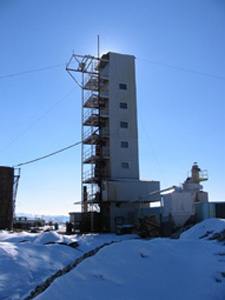 Oil-Tech, as the originator of the latest technology that produces oil from shale, being familiar with the failed oil recovery programs of the shale rich basins in their home state of Utah, became obsessed with finding an answer to this dilemma. After many long years of tinkering with formula after formula, efforts paid off. Their proprietary design incorporated two new remarkable features. Beginning with raw shale commonly known as “Mahogany shale,” Oil-Tech devised an economical retort system using a revolutionary process that produces a high-quality synthetic crude oil. The extraction process smokes the hydrocarbons out of the shale by using a thermal, oxygen-free environment. Then, utilizing a dynamic new bed design, the rock could be heated without caking or forming clinkers that plagued previous industry retort designs. Thanks to Oil-Tech's fine-tuning efforts, assisted by Mike Keller and Roger Noble of Tulsa Combustion, an Oklahoma-based retort consulting firm, the final challenge was resolved, resulting in the process whereby a ton of shale rock now produces one barrel of syncrude.
Oil-Tech, as the originator of the latest technology that produces oil from shale, being familiar with the failed oil recovery programs of the shale rich basins in their home state of Utah, became obsessed with finding an answer to this dilemma. After many long years of tinkering with formula after formula, efforts paid off. Their proprietary design incorporated two new remarkable features. Beginning with raw shale commonly known as “Mahogany shale,” Oil-Tech devised an economical retort system using a revolutionary process that produces a high-quality synthetic crude oil. The extraction process smokes the hydrocarbons out of the shale by using a thermal, oxygen-free environment. Then, utilizing a dynamic new bed design, the rock could be heated without caking or forming clinkers that plagued previous industry retort designs. Thanks to Oil-Tech's fine-tuning efforts, assisted by Mike Keller and Roger Noble of Tulsa Combustion, an Oklahoma-based retort consulting firm, the final challenge was resolved, resulting in the process whereby a ton of shale rock now produces one barrel of syncrude.
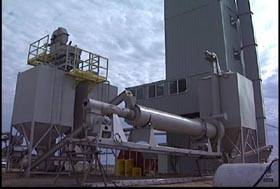 According to Mike Keller, “The company has been incredibly diligent in their efforts to develop, and consistently improve on, a dramatically different design from what had been done in the past. You have to remember that most companies were involved in this industry at least 25 years ago. Oil-Tech understood the geology and the make-up of the local area reserves, and adapted the process to fit their operation. And because their retort design was so unique, it allowed us to do some things differently with downstream equipment that further refined the process.”
According to Mike Keller, “The company has been incredibly diligent in their efforts to develop, and consistently improve on, a dramatically different design from what had been done in the past. You have to remember that most companies were involved in this industry at least 25 years ago. Oil-Tech understood the geology and the make-up of the local area reserves, and adapted the process to fit their operation. And because their retort design was so unique, it allowed us to do some things differently with downstream equipment that further refined the process.”
 So, why couldn't the major oil companies with their brilliant minds and vast resources find a way to produce synthetic crude oil economically? The answer was partly due to the fact that early retort design consistently plugged, combined with the inability to economically recover quality oil based on the technology available at the time. Once those original programs were abandoned, they simply stopped looking down that path, and stuck to what they knew.
So, why couldn't the major oil companies with their brilliant minds and vast resources find a way to produce synthetic crude oil economically? The answer was partly due to the fact that early retort design consistently plugged, combined with the inability to economically recover quality oil based on the technology available at the time. Once those original programs were abandoned, they simply stopped looking down that path, and stuck to what they knew.
“Most of the early technology of the 1980s were spin-offs from European technologies already in use in other retorting operations,” said Noble. “What Oil-Tech did was take a clean sheet of paper and said, This is what we have. Now, how do we build something that works for this?” he goes on to say. “It's my understanding that the process is economically comparable to traditional oil production which means it's very viable,” Noble further states.
 “Look at what's happened for example in Canada with the oil sands. Although the oil sands is a competitive material to traditional production, the major oil companies, Exxon, Shell, the big guys, have spent billions and billions of dollars on oil sands plants, and they continue to do so. So, I believe we have kind of the penguin problem. We've got to get one in the water and show that the sharks won't eat him. Once that happens, I think that everyone will go for a swim,” Keller concludes.
“Look at what's happened for example in Canada with the oil sands. Although the oil sands is a competitive material to traditional production, the major oil companies, Exxon, Shell, the big guys, have spent billions and billions of dollars on oil sands plants, and they continue to do so. So, I believe we have kind of the penguin problem. We've got to get one in the water and show that the sharks won't eat him. Once that happens, I think that everyone will go for a swim,” Keller concludes.
But Oil-Tech's technology cow doesn't stop there. Pyridine, a major by-product of the process is perfect as an asphalt additive, far superior to the costly polymer additives now in use. Previous retort processes used to refine the oil by removing the nitrogen compounds were accomplished by hydro-treating which effectively destroyed this valuable by-product. Oil-Tech's technology includes a method allowing for the recovery of the pyridine — all at a high yield ratio.
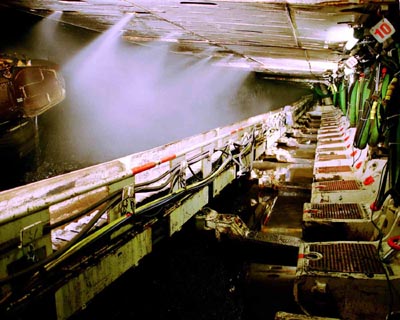 Currently, the U.S. imports about 85% of its asphalt additive stock, mainly from Canada and the Caribbean. Unlike the fluctuating price of crude oil, contract prices for the asphalt additive is not dependent on production quantity factors, and ranges from $75 to $120 per barrel. Clearly, the by-product itself is a proven valuable commodity.
Currently, the U.S. imports about 85% of its asphalt additive stock, mainly from Canada and the Caribbean. Unlike the fluctuating price of crude oil, contract prices for the asphalt additive is not dependent on production quantity factors, and ranges from $75 to $120 per barrel. Clearly, the by-product itself is a proven valuable commodity.
Further, because the oil-shale will be mined underground, using longwall mining equipment, there is little, if any, above ground disturbance making environmentally-friendly. And, according to the State of Utah, there are no environmental problems associated with the spent shale as far as storage or remediation are concerned. Recent testing on the spent shale indicates a very high efficiency in removing hydrocarbon content, leaving a virtually clean by-product material that has all the characteristics of activated charcoal, a material known to actually absorb pollutants. Not bad for a new technology working with materials that historically were worrisome to environmentalists.
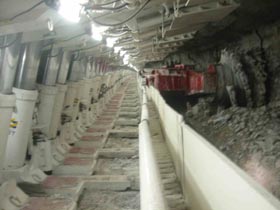 According to the World Energy Council, the largest oil shale reserves occur in the U.S., containing about two-thirds of the world's potentially recoverable oil shale resources, estimated to be able to produce about 2.6 trillion barrels of oil. That effectively means that those reserves are expected to contain an amount that could conceivably meet America's entire energy demands for the next few centuries. And, smaller reserves of oil shale can be found in Canada, Sweden, Estonia, Scotland, Spain, Italy, China, Russia, South Africa, Israel, Zaire, Brazil, Sweden, Scotland and Australia. So, countries around the world would also benefit from this new synthetic crude technology.
According to the World Energy Council, the largest oil shale reserves occur in the U.S., containing about two-thirds of the world's potentially recoverable oil shale resources, estimated to be able to produce about 2.6 trillion barrels of oil. That effectively means that those reserves are expected to contain an amount that could conceivably meet America's entire energy demands for the next few centuries. And, smaller reserves of oil shale can be found in Canada, Sweden, Estonia, Scotland, Spain, Italy, China, Russia, South Africa, Israel, Zaire, Brazil, Sweden, Scotland and Australia. So, countries around the world would also benefit from this new synthetic crude technology.
 With the daily worldwide consumption of oil close to 80 million barrels per day and projected to reach 115 million barrels/day by 2020, Savage is optimistic. “After observing the results of the validation runs, I am now more convinced than ever that the proprietary technology of the retort is absolutely flawless. Any challenges we've had to overcome have not originated with the retort itself but with the off-the-shelf technology of condensing the vapors into liquid oil,” states Savage. “Although Oil-Tech is not large enough to produce oil in significant quantities to impact worldwide needs at this point, licensing of the technology could allow production of oil to reach 10 to 20 million barrels per day through other companies who could easily operate larger production facilities,” concludes Savage.
With the daily worldwide consumption of oil close to 80 million barrels per day and projected to reach 115 million barrels/day by 2020, Savage is optimistic. “After observing the results of the validation runs, I am now more convinced than ever that the proprietary technology of the retort is absolutely flawless. Any challenges we've had to overcome have not originated with the retort itself but with the off-the-shelf technology of condensing the vapors into liquid oil,” states Savage. “Although Oil-Tech is not large enough to produce oil in significant quantities to impact worldwide needs at this point, licensing of the technology could allow production of oil to reach 10 to 20 million barrels per day through other companies who could easily operate larger production facilities,” concludes Savage.
 Oil-Tech has been on the fast track since this new technology has been proven. Meetings with T. Boone Pickens, the Department of Energy, and a short list of third world countries who keep tabs on the company's progress have been ongoing. The final hurdle of the independent validation was addressed in April when Unifield Engineering, a leading engineering firm, highly-recognized in the industry for specializing in the refining of petroleum, oil and gas, power generation, and mining, was brought to the demonstration site to determine if, and verify that, Oil-Tech could deliver a viable new source for synthetic oil.
Oil-Tech has been on the fast track since this new technology has been proven. Meetings with T. Boone Pickens, the Department of Energy, and a short list of third world countries who keep tabs on the company's progress have been ongoing. The final hurdle of the independent validation was addressed in April when Unifield Engineering, a leading engineering firm, highly-recognized in the industry for specializing in the refining of petroleum, oil and gas, power generation, and mining, was brought to the demonstration site to determine if, and verify that, Oil-Tech could deliver a viable new source for synthetic oil.
 The outcome could not have been better. As Rick Houston, Senior Process Engineer for Unifield recalls, “I first visited the Oil-Tech site in February of this year. My company was hired by Oil-Tech to perform the validation of a demonstration run that was being conducted at the test facility that Oil-Tech maintains near Vernal, Utah. I was asked to return in April to witness the performance of the demonstration run to verify the data collection activities, and to determine a basis for performance of the unit during the test run. The facility made oil every time I was out there with several hundred barrels of oil made over several hours of operation.”
The outcome could not have been better. As Rick Houston, Senior Process Engineer for Unifield recalls, “I first visited the Oil-Tech site in February of this year. My company was hired by Oil-Tech to perform the validation of a demonstration run that was being conducted at the test facility that Oil-Tech maintains near Vernal, Utah. I was asked to return in April to witness the performance of the demonstration run to verify the data collection activities, and to determine a basis for performance of the unit during the test run. The facility made oil every time I was out there with several hundred barrels of oil made over several hours of operation.”
This certainly sounds like another case of David outsmarting Goliath. And, with the company now poised to begin full-scale production and licensing of the technology for use by major oil producers, could Oil-Tech be the answer to America's energy crisis? If Jack Savage has anything to say about it, the answer is absolutely.
For more information on Oil-Tech, contact:
Kaya Morgan (Click link to view bio page)
Island Connections
9030 W. Sahara Ave., #236
Las Vegas, NV. 89117
Tel: 702.242.3247
e-mail: kaya@islandconnections.com

All rights reserved © 2004
Press Coverage | VentureCapital | Business Development | Venture Opportunities | Resources | Contact Us | Investor Extras | Home